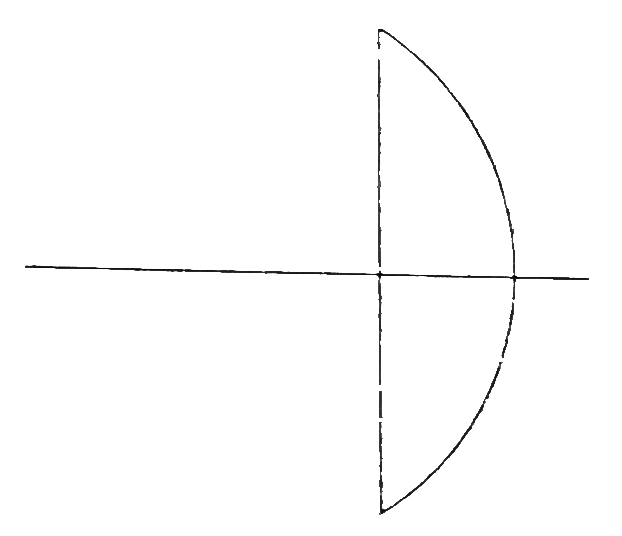A thin lens focal length f1 and its aperture has diameter d. It forms an image of intensity I. Now the central part of the aperture up to diameterd2 is blocked by an opaque paper. The focal length and image intensity will change to
On blocking the central part of the lens, its focal length does not change. It remains f only. Intensity of image is directly proportional to the area of the lens through which light passes. Now, initial area A1=π(d/2)2=πd2/4
On blocking the central part of the aperture upto diameter d/2, the area left out is
A2=π(d/2)−π(d/4)2=πd24−πd216=3πd216
As I2I1=A2A1=3πd2416πd2=1216=34∴I2=34I1.
Topper's Solved these Questions
- BOOK - PRADEEPCHAPTER - RAY OPTICSEXERCISE - Conceptual problem(c)8videos
RAY OPTICS
- BOOK - PRADEEPCHAPTER - RAY OPTICSEXERCISE - Conceptual problem(d)14videos
RAY OPTICS
- BOOK - PRADEEPCHAPTER - RAY OPTICSEXERCISE - Solved Example(d)32videos
RAY OPTICS
- BOOK - PRADEEPCHAPTER - PROPERTIES OF BULK MATTEREXERCISE - Multiple choice questions7videos
PROPERTIES OF BULK MATTER
- BOOK - PRADEEPCHAPTER - SYSTEMS OF PARTICLES AND ROTATIONAL MOTIONEXERCISE - Assertion- Reason Type questions20videos
SYSTEMS OF PARTICLES AND ROTATIONAL MOTION
Similar Questions
How will the focal length of a lens is changed if its aperture is increased to double ?
View SolutionA lens haivng focal length and aperture of diameter d forms an image of intensity I. Aperture of diameter d2 in central region of lens is covered by a black paper. Focal length of lens and intensity of image now will be respectively.
View Solution
Knowledge Check
- Question 1 - Select One
A thin convex lens of focal length f, has its aperture of diameter d. It forms a real iomage of intensity I. The central part of the aperture is blocked by an opaque paper of diameter d2. What is the focal length of the lens and the intensity of image formed by the lens ?
Af2,I2Bf,3I4C3f4,12Df,I4 - Question 2 - Select One
A lens having focal length f and aperture of diameter d forms an image of intensity I. Aperture of diameter d2 is central region of lens is covered by a black paper. Focal length of lens and intensity of image now will be respectively.
Afand3I4Bf2andI2CfandI4D2f - Question 3 - Select One
A lens haivng focal length and aperture of diameter d forms an image of intensity I. Aperture of diameter d2 in central region of lens is covered by a black paper. Focal length of lens and intensity of image now will be respectively.
AfandI4B3f4andI2Cfand3I4Df2andI2
Two thin lenses of focal lengths f1andf2 are placed in contact. The focal length of the composite lens will be
View SolutionA beam of 8mW power and wavelength 6000Å has aperture 2 mm. If it is focused by a lens of focal length 6 cm the intensity of the image (×103) is
View SolutionA convex lens has a focal length of 20 cm. It is used to form an image of an object placed 15 cm from lens. The image is
View SolutionA laser beam of 10mW power and wavelength 700nm has aperture of 3mm. If it is focused by a lens of focal length 5cm, the intensity of image is
View SolutionA plano-convex lens (μ=1.5) of aperture diameter 8cm has a maximum thickness of 4mm. The focal length of the lens relative to air is
 View Solution
View Solution

